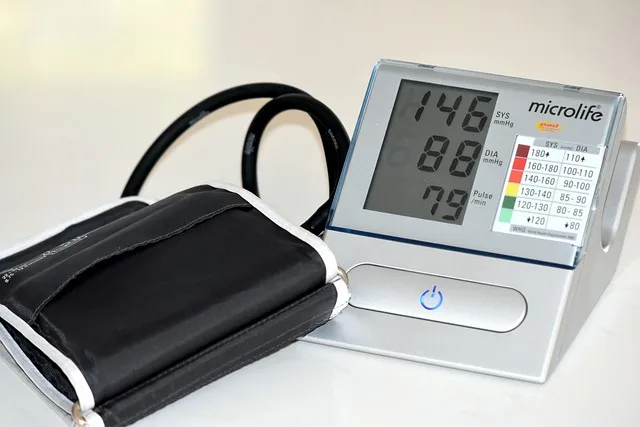Diuretics (fluid or water pills) are medicines that increase how much salt and water your kidneys pass into the urine, and eventually out of the body.
They are prescribed commonly and can be used to treat a variety of conditions. They are usually taken as oral pills but can also be administered into a vein.
What are diuretics used to treat?
Excess salt (sodium) in your body causes your kidneys to retain more fluid. Diuretics reduce how much fluid you have in your blood vessels by increasing how much salt your kidneys pass into the urine. Because of this, these medications may be used alone, or in combination with other medications to treat conditions that respond to increased clearance of fluids. These conditions include:
- High blood pressure (hypertension)
- Congestive heart failure
- Edema. This is the accumulation of fluids that can occur in different body parts, including the feet, hands, legs, abdomen, and lungs.
- Kidney disease
- Glaucoma—a group of diseases that damage your optic nerve, typically due to high pressure within the eye.
What are the types of diuretics?
The 5 classes of diuretics are: loop, thiazide, potassium-sparing, osmotic and carbonic anhydrase inhibitors.
Thiazide diuretics
These cause your kidneys to pass more salt and water into the urine. They cause moderate fluid loss from the body. They are usually used for long term treatment of high blood pressure, but can also be used to manage heart failure.
Also, they may be used to treat diabetes insipidus (a condition of increased thirst and passing large amounts of dilute urine).
Examples of thiazide diuretics include:
- Chlorthalidone (Hygroton, Thalitone)
- Hydrochlorothiazide or HCTZ (Microzide, HydroDiuril)
- Bendroflumethiazide (Aprinox)
- Indapamide (Lozol)
- Chlorothiazide (Diuril)
Loop diuretics
These medicines work in the loop of Henle, which is the U-shaped portion of the filtering units of the kidneys (nephron). They cause more salt, potassium, and water to pass into the urine. Loop diuretics cause more urination than thiazide diuretics.
They are often used to treat heart failure, liver cirrhosis, high blood calcium (hypercalcemia), and certain kidney problems.
Examples of loop diuretics include:
- Furosemide (Lasix)
- Bumetanide (Bumex)
- Torsemide (Demadex)
- Ethacrynic acid (Edecrin)
Potassium-sparing diuretics
These medications cause your kidneys to get rid of salt and water while retaining potassium. They are not as strong as loop or thiazide diuretics. They may be prescribed in combination with other diuretics to treat hypertension.
Examples of potassium-sparing diuretics include:
- Spironolactone (Aldactone, CaroSpir)
- Eplerenone (Inspra)
- Amiloride (Midamor)
- Triamterene (Dyrenium)
Carbonic anhydrase inhibitors
These block the activity of carbonic anhydrase, an enzyme in the body that breaks down carbonic acid. They cause the kidneys to pass more sodium, bicarbonate, and fluid. Therefore, you pass large amounts of alkaline urine.
In the eyes, carbonic anhydrase inhibitors treat glaucoma by decreasing the formation of aqueous humor (a transparent fluid in the front part of the eye).
Carbonic anhydrase inhibitors may also be used to treat epilepsy, altitude sickness, and idiopathic intracranial hypertension (a condition of increased pressure around the brain without an identified cause).
Examples of carbonic anhydrase inhibitors include:
- Acetazolamide (Diamox)
- Methazolamide (Neptazone)
- Dorzolamide (Trusopt)
- Brinzolamide (Azopt)
Dorzolamide and brinzolamide are applied as liquid drops onto the eyeball.
Osmotic diuretics
These are solutes which prevent the normal absorption of water and sodium by the kidneys, causing them to pass into urine. They are usually given intravenously. They can be used to increase urine output in people with kidney failure and to decrease pressure in the eyes and around the brain.
Mannitol (Osmitrol) is the most commonly used osmotic diuretic.
What are the side effects of diuretics?
Some side effects that may arise from taking these medications include:
- Weakness
- Headache
- Hearing problems
- Kidney stones
- Paresthesias—a feeling of pins and needles under the skin
- Enlargement of breasts in males (gynecomastia)
- High uric acid levels in blood (hyperuricemia)
- Dizziness
- Dehydration
- Increased blood cholesterol
- Increased blood sugar in people who have diabetes or prediabetes
- Electrolyte imbalances, such as low sodium (hyponatremia) and low magnesium (hypomagnesemia). People who are taking potassium-sparing diuretics may also get high blood potassium (hyperkalemia), while those taking other types of diuretics can get low blood potassium (hypokalemia).
If you get fever, difficulty breathing, red eyes, and raised, itchy bumps on the skin after taking a diuretic, you might be experiencing an allergic reaction to that drug. It is important that you seek medical attention immediately.
Who shouldn’t take diuretics?
Diuretics are safe for most people. However, they can worsen some pre-existing conditions. Your doctor may decide to withhold diuretic medications if you:
- Have pancreatitis
- Have diabetes
- Have gout
- Are severely dehydrated
- Are allergic to a certain diuretic or other sulfa-containing drugs
- Have end-stage kidney disease
- Have liver cirrhosis
If you are pregnant or breastfeeding, most diuretics are safe to take. But you still need to talk to your doctor about which medicine may work best for you.
What medications can interact with diuretics?
You should consult your doctor before taking any medications while on diuretic therapy, as they may cause unwanted effects. Some of these medications include:
- Other antihypertensives
- Digoxin
- Nonsteroidal anti-inflammatory drugs (NSAIDs) such as indomethacin
- Probenecid
- Lithium
- Aminoglycoside antibiotics like streptomycin, gentamicin, neomycin
How can I take diuretics safely?
If you are taking diuretics, adhering to your medications is essential to improving your health outcomes. Some tips to follow when taking them include:
- You may need to take diuretics once or twice a day. If you take a diuretic once a day, it is recommended that you take it at the same time every morning so that you don’t have your sleep affected by frequently waking up to pee.
- Because diuretics can alter the normal balance of electrolytes (such as sodium, potassium, and magnesium) in your body, you need to keep your scheduled lab appointments such that electrolyte imbalances and other problems can be identified early enough.
- Avoid taking alcohol because it can worsen the side effects of diuretics.
- If you are taking potassium-sparing diuretics, limit your intake of salt substitutes and potassium rich foods such as bananas, sweet potatoes, and spinach.
- You need to limit your salt intake as you take diuretics. Talk to a dietitian about how to stick to a low-salt diet.
What should I remember?
Diuretics play a key role in managing conditions like hypertension, heart failure, and certain kidney issues. By helping the body eliminate excess salt and water, they reduce blood pressure and lessen strain on the heart and blood vessels. Different types of diuretics work in distinct ways, so healthcare providers select the one best suited to each patient’s needs.
While diuretics are generally safe, they can have side effects, such as electrolyte imbalances, dehydration, and increased urination. Regular monitoring and open communication with your doctor are essential to using diuretics safely and effectively. If prescribed, following your doctor’s instructions will help you get the most benefit from these medications while minimizing potential risks.










